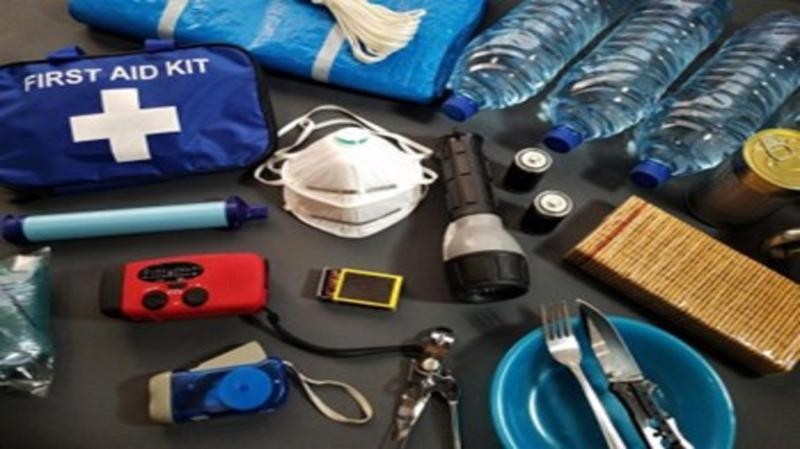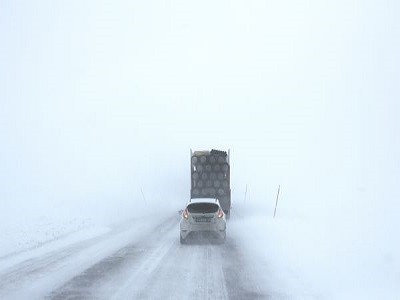Winter in Erie County, New York, is often synonymous with snow, ice, and challenging weather conditions. While the beauty of a snow-covered landscape is undeniable, winter storms can pose significant risks, leading to hazardous travel conditions and potential emergencies. One crucial measure implemented during severe winter weather is the Erie County Travel Ban. Understanding what a travel ban means, how to prepare for it, and what to do during one is essential for the safety and well-being of all residents and visitors. This guide provides comprehensive information to help you navigate Erie County travel bans and stay safe during winter storms.
When winter storms strike Erie County, the primary concern is public safety. Heavy snowfall, blizzard conditions, and icy roads can make travel extremely dangerous, if not impossible. To mitigate these risks, Erie County officials may declare a travel ban. A travel ban is a legal restriction on driving and operating vehicles within the affected area. It is put in place to:
- Reduce Accidents: By keeping vehicles off the roads, travel bans significantly decrease the likelihood of car accidents caused by hazardous conditions.
- Protect Emergency Responders: Travel bans ensure that emergency services, such as police, fire departments, and ambulances, can move freely to respond to emergencies without being hindered by civilian traffic.
- Allow for Snow Removal: With roads clear of vehicles, snowplows and other snow removal equipment can operate more efficiently to clear roadways and restore safe travel conditions as quickly as possible.
Understanding Winter Storm Warnings and Travel Advisories
It’s important to differentiate between a travel ban, a winter storm warning, and a travel advisory. A Winter Storm Warning means severe winter weather conditions are expected or occurring. These conditions can include heavy snow, ice, and high winds. A Travel Advisory is issued when hazardous travel conditions are expected or occurring, and caution is advised. While a travel advisory urges caution, it does not legally prohibit travel. A Travel Ban, on the other hand, is a mandatory restriction on travel, carrying more serious implications and potential penalties for violation.
During a Winter Storm Warning:
- Seek Shelter Immediately: If you are not home, find the nearest safe shelter. Call 2-1-1 to locate warming shelters in Erie County if needed.
- Stay Off the Roads: This is crucial. Even without a formal travel ban in place, driving during a winter storm warning is highly discouraged.
- Clear Vents: Ensure exterior exhaust and furnace vents are clear to prevent carbon monoxide build-up.
- Stay Indoors and Warm: Dress in layers and have warm clothing readily available.
- Bring Pets Inside: Protect your pets from the extreme cold by bringing them indoors.
- Monitor Emergency Alerts: Stay tuned to local news, radio, and official channels for emergency information and updates. The Ready Erie App and the City of Buffalo BUFFALERT System are excellent resources for real-time alerts.
- Locate Utilities: Know the location of electrical boxes and water shut-offs in your home.
- Prepare for Power Outages: Have flashlights, batteries, and a backup power source if possible.
- Use Generators Safely: If using a generator, operate it outdoors only and away from windows and doors to prevent carbon monoxide poisoning.
- Watch for Hypothermia and Frostbite: Be aware of the signs of hypothermia and frostbite, and seek medical attention immediately if symptoms appear. Learn more about hypothermia and frostbite from the CDC.
- Check on Neighbors: Especially check on elderly or vulnerable neighbors who may need assistance.
Preparing for Winter Weather and Potential Travel Bans
Proactive preparation is key to staying safe during Erie County winter storms. Developing a comprehensive emergency plan and assembling essential kits for your home and car are vital steps.
Make a Plan:
Creating and practicing an emergency plan ensures everyone in your household knows what to do in a winter storm or travel ban situation. Your plan should include:
- Emergency Alerts: How will you receive emergency alerts and warnings? Ensure you have downloaded the Ready Erie App and signed up for BUFFALERT.
- Evacuation Plan: While less common in winter storms, know your evacuation routes in case of other emergencies.
- Communication: How will you communicate with family and friends if separated? Establish a designated meeting place and out-of-state contact person.
- Emergency Kits: Regularly update your emergency kits for home, car, and work.
Ready.gov offers resources in multiple languages to help you make an emergency plan.
Build Emergency Kits:
Having well-stocked emergency kits is crucial for self-sufficiency during a winter storm and potential travel ban.
Home Emergency Kit:
- Food and Water: Store a supply of non-perishable food and bottled water for at least several days. Explore building your food pantry and download the Emergency Eats Cookbook.
- Medications and First Aid: Include prescription medications, over-the-counter pain relievers, and a comprehensive first-aid kit.
- Warm Clothing and Blankets: Have extra layers of warm clothing, blankets, and sleeping bags.
- Communication and Lighting: A portable radio (battery-powered or hand-crank), flashlights, and extra batteries are essential.
- Neighbor Contact Information: Exchange contact information with neighbors to check on each other during emergencies.
- Additional Items: Consider including items like a snow shovel, rock salt, and a multi-tool.
See a more detailed list of items to include in your home kit at Ready.gov.
 Emergency home kit
Emergency home kit
Car Emergency Kit:
If you must travel before or after a storm (when travel is permitted and safe), ensure your vehicle is equipped with a winter emergency kit:
- Warm Clothing, Blankets, and Hats: Pack extra layers to stay warm if stranded.
- Cell Phone Charger: Keep a car charger for your cell phone.
- Flashlight and Extra Batteries: For signaling and visibility.
- First-Aid Kit: For minor injuries.
- Jumper Cables: In case of battery failure.
- Sand or Kitty Litter: For traction if your car gets stuck in snow or ice.
- Snow Shovel and Ice Scraper: To clear snow and ice from your vehicle.
- Non-perishable Food and Water: In case of delays.
Find a more comprehensive car emergency kit checklist at Ready.gov.
 Emergency car kit
Emergency car kit
Health Risks During Winter Storms
Beyond travel hazards, winter storms bring a range of health risks. Extreme cold can lead to serious conditions:
- Hypothermia and Frostbite: Prolonged exposure to cold can cause hypothermia (dangerously low body temperature) and frostbite (tissue damage due to freezing). Seek immediate medical attention if you suspect these conditions.
- Carbon Monoxide Poisoning: Improper use of fuel-burning appliances like generators, stoves, or fireplaces can lead to carbon monoxide poisoning. Carbon monoxide is odorless and deadly. Install carbon monoxide detectors and ensure proper ventilation when using fuel-burning appliances. Learn more about carbon monoxide poisoning symptoms.
- Heart Attacks: Overexertion during activities like shoveling snow can strain the heart, especially for individuals with pre-existing heart conditions. Take breaks and avoid overexertion.
Protecting Vulnerable Populations
Winter storms and travel bans disproportionately affect vulnerable populations. It’s crucial to consider the needs of:
- Seniors: Check on elderly neighbors and family members, ensuring they have heat, food, and medications.
- Pets: Bring pets indoors and provide them with warm shelter. Consult your veterinarian for pet-specific winter safety advice.
- Homeless Individuals: Support local shelters and outreach programs that provide assistance to the homeless during winter storms.
- People with Disabilities: Ensure individuals with disabilities have the resources and support they need to stay safe and warm.
- Individuals with Chronic Diseases: Those with conditions like asthma, diabetes, and heart conditions should take extra precautions to stay healthy during winter storms.
Stay Informed and Stay Safe
During an Erie County travel ban and throughout the winter season, staying informed is paramount. Utilize resources like the Ready Erie App, BUFFALERT, local news and radio, and official Erie County government websites for up-to-date information and safety guidance. By preparing in advance, staying informed, and taking necessary precautions, you can navigate Erie County winter storms safely and protect yourself and your loved ones.
Additional Resources:
- Ready Erie App
- City of Buffalo BUFFALERT System
- CDC Winter Weather Safety
- Ready.gov Winter Storms & Extreme Cold
- Erie County Department of Health
